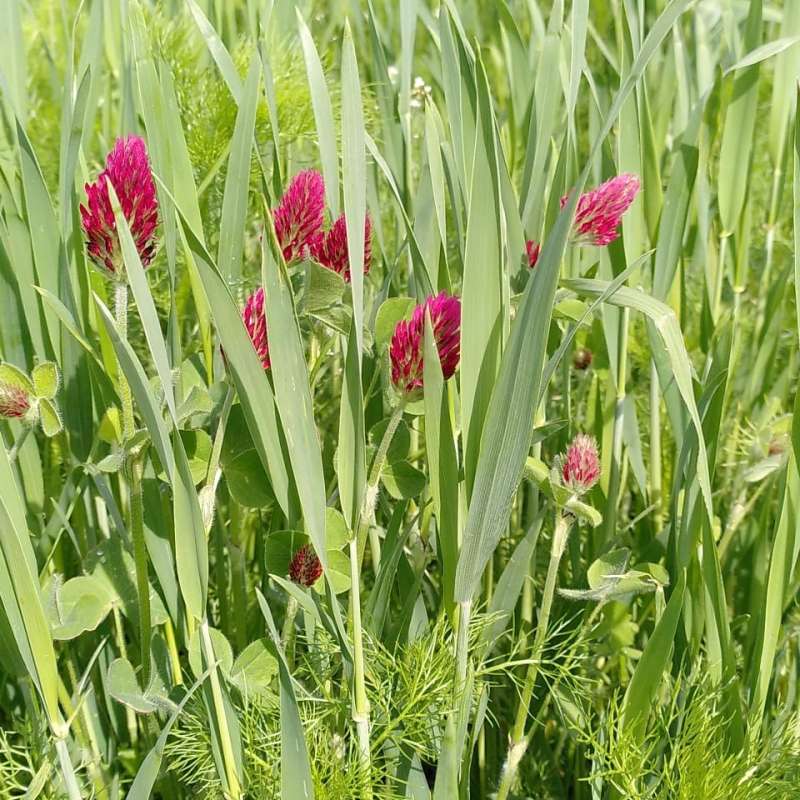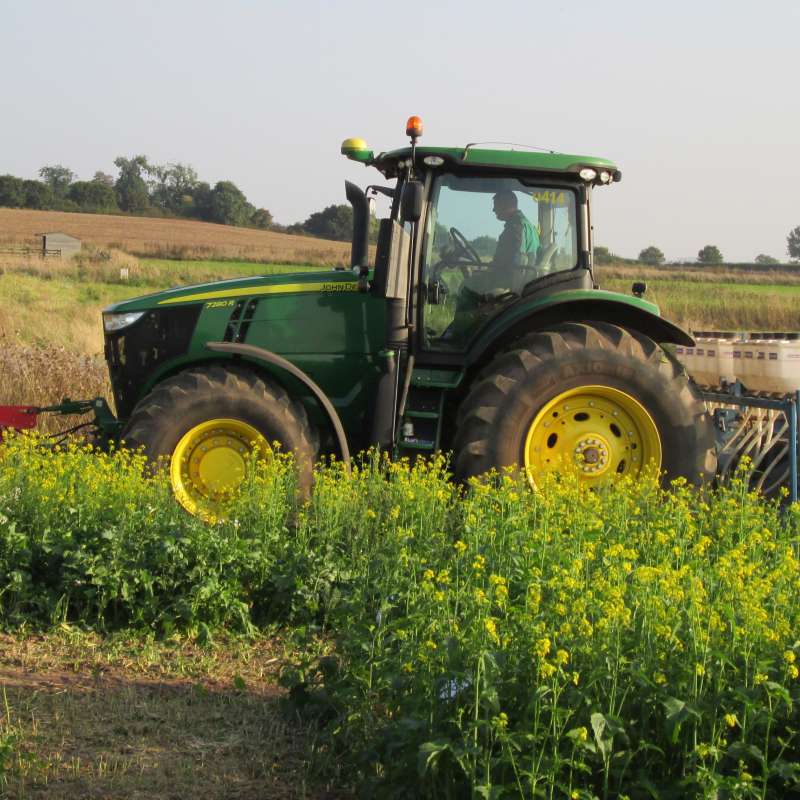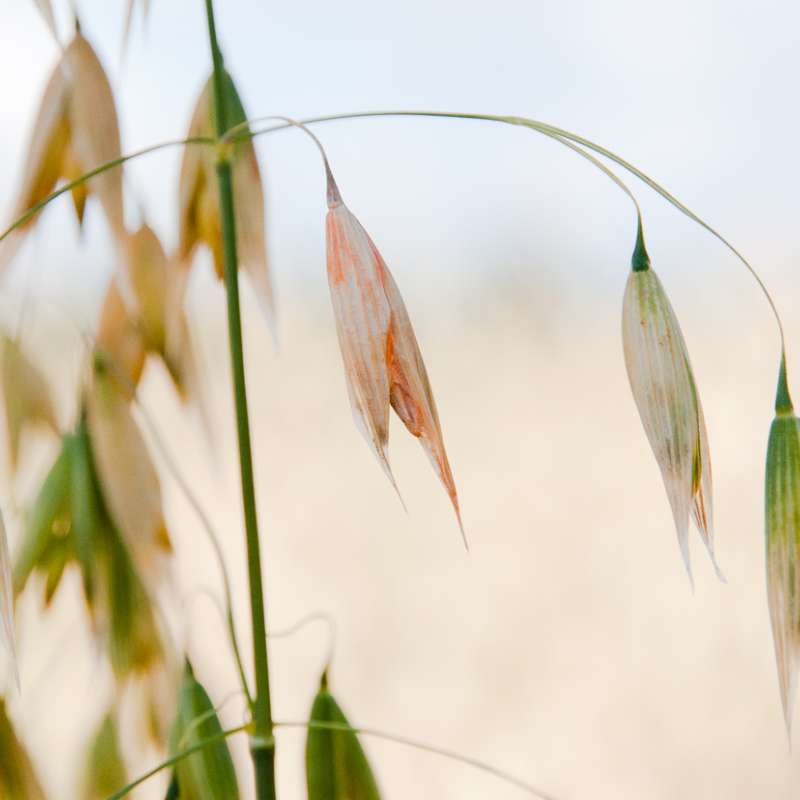Jafar Razzaghian
Senioringeniør
Sammendrag
Angrep av plantepatogene sopp og nematoder kan redusere avling og kvalitet av norskdyrket korn. Soppsjukdommer i korn kan til en viss grad bekjempes ved bruk av soppmidler (fungicider) men ingen kjemiske midler er godkjente mot nematoder i Norge. Vi har analysert innhold av glukosinolater og isotiocyanater i røtter og blader fra 12 ulike korsblomstra vekster. Noen av de korsblomstra vekstene produserte spesifikke kjemiske forbindelser (allyl-isotiocyanat) som i våre forsøk viste seg å kunne hemme vekst av plantepatogene sopp og nematoder som forekommer i korn. Vi observerte redusert overlevelse av sopp på kornrester i jord etter innblanding av oppkutta blader fra korsblomstra vekster i jorda (veksthusforsøk). Vi påviste derimot ikke noen effekt på overlevelse av nematoder (egg) i jord. Vi ønsker videre å studere overlevelse av sopp og nematoder i jord/halmrester i feltforsøk med utvalgte korsblomstra vekster som fangvekst/ettervekst i korn (i potensielle fremtidige prosjekt)
Sammendrag
Angrep av plantepatogene sopp og nematoder kan redusere avling og kvalitet av norskdyrket korn. Disse skadegjørerne kan til dels bekjempes ved bruk av kjemiske plantevernmidler. I 2023 startet vi opp et prosjekt med formål om å identifisere «grønne» metoder for å bekjempe plantepatogene sopp og nematoder i korn, som et alternativ til kjemiske plantevernmidler. Prosjektet har kortnavnet: «Grønt plantevern» og er finansiert av Landbruksdirektoratet. Våre kjemiske analyser av korsblomstra fangvekster dyrket i Norge viser at plantene inneholder en rekke glukosinolater som kan hydrolysere til mange ulike bioaktive isotiocyanater, hvis effekt mot planteskadegjørere fortsatt er lite studert. Våre undersøkelser har vist at sennepskål produserer allyl-isotiocyanat som kan hemme overlevelse og utvikling av sopp og nematoder som er vanlig i norsk korn. Våre forsøk viste dessuten en tendens til at innblanding av nettopp sennepskål kan redusere overlevelse av plantepatogene sopp og nematoder i planterester og jord. Vi fikk også en indikasjon på at forreddik kan hemme overlevelse av plantepatogene sopp i jorda. Vi håper at resultatene fra dette prosjektet kan danne grunnlag for et større prosjekt der en kan gjennomføre feltforsøk for å undersøke om dyrking av korsblomstra vekster som fangvekst/ettervekst i korn kan bidra til å redusere smittepresset av sopp og nematoder i skifter med ensidig korndyrking.
Sammendrag
Det er behov for å utvikle mer kunnskap om hvorvidt og i hvilken grad plantehelsa i korn dyrket under en regenerativ dyrkingspraksis under norske forhold, skiller seg fra plantehelsa i korn fra skifter med en mer konvensjonell dyrkingspraksis. I prosjektet «REKORN» ønsker vi å sammenlikne plantehelsa i korn fra skifter dyrket med ulike dyrkingsmetoder som benyttes innen regenerativt landbruk.

Divisjon for bioteknologi og plantehelse
REKORN: Can regenerative cultivation methods contribute to reduce the risk of fungal diseases in cereals?
Regenerative agriculture is referred to as a bridge between organic and conventional agriculture and has received increased attention in recent years. Regenerative agriculture focuses on soil health and cultivation measures that can stimulate soil life and plant growth. An improvement in soil health is visualized, among other things, in increased carbon storage in the soil, limited soil compaction and increased microbiological diversity. The methods used to improve soil health within cereal cultivation may include crop rotation, reduced tillage, intercropping, use of catch crops and surface composting where plant residues are mixed into the top-soil layer.

Divisjon for bioteknologi og plantehelse
REKORN: Kan regenerative dyrkingsmetoder bidra til å redusere risiko for soppsjukdommer i korn?
I prosjektet «REKORN» ønsker vi å sammenlikne plantehelsa i korn fra skifter dyrket med ulike dyrkingsmetoder som benyttes innen regenerativt landbruk. Gjennom REKORN ønsker vi å utvikle kunnskap om sammenhengen mellom jordhelse og plantehelse.

Divisjon for bioteknologi og plantehelse
Green crop protection: Cruciferous plants as a green alternative to chemical pesticides in cereals
Cereal plants infested with plant pathogenic fungi or nematodes may have reduced grain quality and yield. These diseases can partly be controlled by using chemical pesticides. The purpose of this project is to identify "green" methods to mitigate plant pathogenic fungi and nematodes in cereals, as an alternative to chemical pesticides.

Divisjon for bioteknologi og plantehelse
Kunnskap om faktorer som påvirker utvikling av sopp og soppgifter
Prosjektet skal identifisere faktorer som påvirker innhold av soppgifter eller andre naturlig dannede uønskede stoffer i planter, og utvikle kunnskap som kan bidra til å redusere forekomsten av slike gifter.

Divisjon for bioteknologi og plantehelse
Grønt plantevern: Korsblomstra vekster som et grønt alternativ til kjemiske plantevernmidler i korn
Angrep av plantepatogene sopp og nematoder kan redusere avling og kvalitet av norskdyrket korn. Målet med prosjektet er å komme frem til et grønt alternativ til kjemiske plantevernmidler for å bekjempe skadegjørere i norsk korn. Vi forventer å identifisere korsblomstra vekster som har potensiale til å redusere overlevelse av plantepatogene sopper og nematoder i jord/planterester dersom de brukes som fangvekst/ettervekst i norskdyrket korn.
